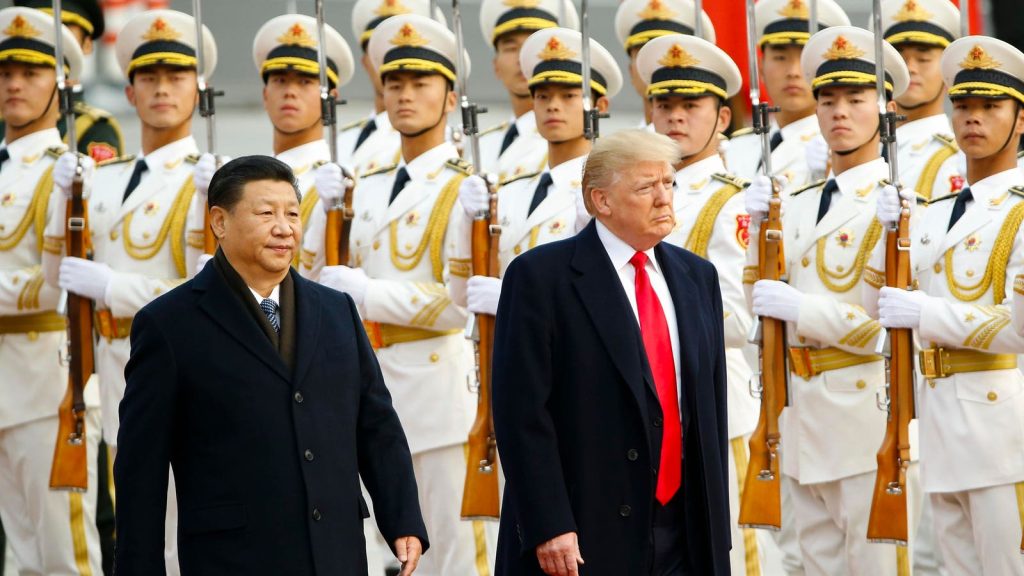The technological rivalry between the United States and China has intensified, with artificial intelligence (AI) and cryptocurrencies emerging as critical battlegrounds. China’s rapid advancements in AI, exemplified by the rise of DeepSeek, are challenging the long-held assumption of U.S. technological dominance. DeepSeek’s AI models, achieving performance comparable to leading U.S. models at a fraction of the cost, signify a potential shift in the global AI landscape. This development follows a period of perceived U.S. advantage following the release of OpenAI’s ChatGPT, which initially spurred a wave of less successful Chinese imitations. The success of DeepSeek highlights the dynamism of this technological race and the potential for rapid shifts in competitive advantage.
The two nations are pursuing distinct strategies in both AI and cryptocurrency. The U.S., under the influence of figures like Elon Musk and Larry Ellison, prioritizes private sector innovation within a regulatory framework. This approach aims to leverage the dynamism of American tech companies while addressing concerns about safety and security. Conversely, China’s strategy centers on state-directed development and integration, exemplified by its promotion of the digital yuan and support for companies like DeepSeek. This centralized approach allows for rapid resource allocation and coordinated development but raises questions about adaptability and international acceptance. The divergent strategies reflect fundamentally different philosophies regarding the role of government and the private sector in technological advancement.
The intersection of AI and cryptocurrencies presents a complex and rapidly evolving landscape. China’s foray into a central bank digital currency (CBDC), coupled with its advancements in cost-effective AI, could potentially accelerate de-dollarization efforts. The digital yuan, enhanced by AI-driven financial systems, could facilitate international trade settlements independent of the U.S. dollar, particularly within China’s expanding Belt and Road network. This presents a direct challenge to the U.S. dollar’s global dominance. Meanwhile, the U.S. focus on private sector innovation aims to develop AI-enhanced crypto products and services, potentially including dollar-backed stablecoins, to strengthen the dollar’s position in the evolving digital financial system.
Former President Trump’s stance on these technologies reflects a blend of promoting American innovation and safeguarding national interests. While expressing skepticism towards Bitcoin, his administration fostered a regulatory environment that allowed both AI and crypto industries to flourish. This approach, coupled with China’s crackdown on cryptocurrencies, positioned the U.S. as a hub for both AI development and crypto trading, aligning with his “America First” economic policy. President Xi Jinping’s approach, on the other hand, emphasizes state control and integration. While suppressing private cryptocurrencies, China has aggressively pursued the development of its digital yuan, aiming to modernize its financial systems under strict government oversight. This contrasting approach highlights the different philosophical underpinnings driving the two nations’ technological strategies.
The future trajectory of this competition hinges on several key factors. The U.S. must navigate the delicate balance between fostering innovation and mitigating risks associated with these rapidly evolving technologies. China, meanwhile, faces the challenge of gaining international acceptance for its state-controlled digital currency and demonstrating its long-term viability. The ability of each nation to adapt to the evolving landscape and forge strategic partnerships will be crucial. The convergence of AI and cryptocurrencies has the potential to reshape global trade, financial systems, and the balance of technological power.
The contrasting approaches adopted by the U.S. and China reflect not only differing economic philosophies but also distinct political and cultural contexts. The U.S. model relies on the dynamism and competitive spirit of its private sector, coupled with regulatory oversight to address potential risks. China’s model, characterized by centralized planning and control, aims to leverage the state’s ability to mobilize resources and direct development towards national strategic goals. The outcome of this competition will have far-reaching implications for the global economy and the future of technological innovation. The success of each model will likely depend on its ability to adapt to the evolving technological landscape and navigate the complex interplay of economic, political, and geopolitical forces.










